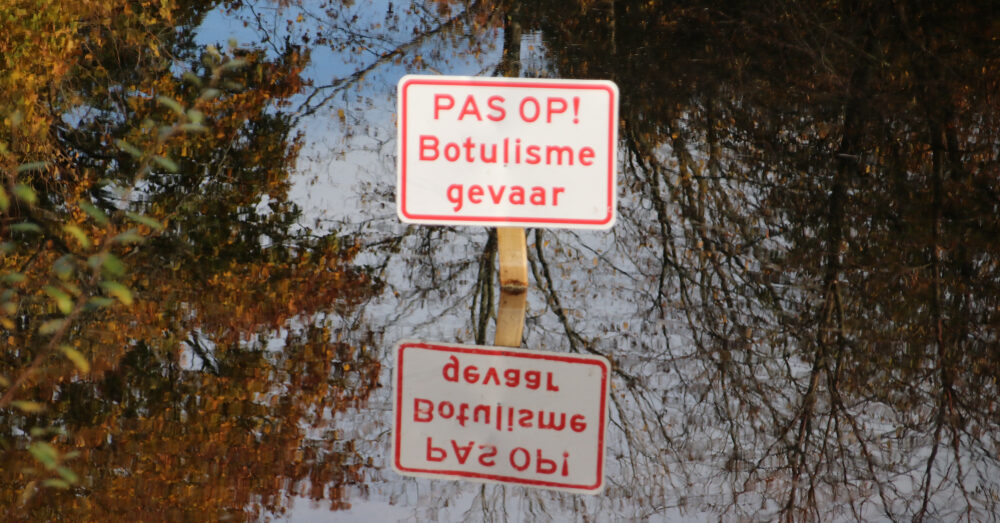Text René Didde
When we talk about ‘rewilding’, we tend to talk about spectacular predators such as the wolf. But at the biennial international Pathways congress, held in Wageningen from 19 to 21 October, the talk is mainly about the interaction between humans and wildlife. Because you can rewild to your heart’s content, but ‘you’ve got to have people on board.’
We long to live more in harmony with nature, because the outdoor life is healthy and relaxed. Yet at the same time, our increasingly urban society is pulling us further away from nature. Because staying indoors is comfortable, warm and safe, says Koen Arts. And he should know because he is not only a researcher on ‘human-nature interactions’ but also garnered much publicity with his book Wild jaar (Wild Year), in which he recounts 365 nights of sleeping out of doors.
It is often said that there is no nature left in the Netherlands, and people wonder what rewilding could look like in this country where every square metre seems to be managed and neatly raked or tiled. Yet even in the Netherlands, there are more possibilities than we think, and we really don’t have to go to Alaska or Siberia to find wilderness, says Arts. ‘Roughly 16 per cent of the Netherlands’ land surface is nature and forest. Earlier research by what was then Alterra showed that there are several areas that are potential locations for wolf packs. Wilderness is a bit like with cold water: you dither and procrastinate, but once you’re in it, it’s great.’
Arts is organizing a workshop on the tensions in the human-nature relationship at the Pathways conference. Besides authoring his own book, he is also one of the editors of the book Rewilding in the Netherlands, a collection of essays on ‘a more offensive nature strategy’, published earlier this year. ‘If we want more wilderness in the Netherlands, we’ve got to get people on board,’ is his conviction. ‘And preferably not just offer people a bird-watching spot on the dyke passing Oostvaardersplassen, but give them more of a chance to really experience nature. Oostvaardersplassen still reflects the old-fashioned mentality: “nature is over there and people are over here”.’
Wilderness experience
Such an experience is already on offer in the Markerwadden, the archipelago of islands in the Markermeer designed and constructed entirely by engineers and ecologists. And it’s even better in the Gelderse Poort nature area, says Arts, because that is accessible to more people. ‘You can get there without a boat and you are allowed to go off the beaten track. And schoolchildren are allowed to roam freely and get mud under their nails.’
Large grazers play a big role in the wilderness experience and in ecology. The wisent, for example, the largest living land mammal, died out in the wild a hundred years ago. Now this European bison has been successfully reintroduced to the Netherlands, although it has bitten the occasional day-tripper.
The wolf likes it here and we humans have to get used to that
But ‘smaller stuff’ such as food forests, ‘guerrilla gardening’ and even nature in a digital environment (such as visiting a virtual nature reserve with 3D glasses) can enhance our experience of nature and help develop ‘a greener ethos’, the researcher says. ‘In the process, we need to take more account of different ethnic and socio-economic backgrounds. Nature is experienced differently by different people. There are parents who are members of Natuurmonumenten and IVN and take their children to nature areas, you have people who want to harvest from nature and there are people with physical disabilities. Everyone should be able to experience wilderness.’
The wolf is proof that the largely man-made nature of the Netherlands is apparently suitable for wildlife. ‘The wolf likes it here and we humans will have to get used to it. This will be accompanied by incidents that go with the adaptation process, such as dead sheep. Sheep farmers in wolf territory are suddenly being urged to install fencing. Incidentally, a survey by a Master’s student on attitudes to the wolf in Germany and the Netherlands shows that after a few years, farmers’ attitudes become more positive.’ Arts himself conducted research into farmers’ opinions on the bald eagle in Scotland. ‘It was initially accused of killing lambs. But there, too, attitudes eventually changed for the better. But it doesn’t happen by itself. It calls for good dialogue and tools such as compensation schemes.’
Wildlife businesses
Possibly opportunities for rewilding in the Netherlands could be part and parcel of solutions to the many current spatial issues, such as adaptation to climate change, flooding, drought and the nitrogen crisis. Farmers still occupy more than half of the rural land in the country. ‘In the short term, they are not likely to go along with it, as many are stuck with their bank loans. But we do need to move in the direction of seeing rewilding as a potential business model for farmers, perhaps in combination with food production and climate buffers, so that water is better retained.’ Researchers can contribute by, for example, analysing settlement factors for wildlife and mapping what is possible where and in what combination. For example? ‘A beaver can benefit a farm in terms of water retention and offer new opportunities with regard to bulrush cultivation, for example.’
There are even possibilities on a balcony
Finally, when we think of wilderness, we often think of large grazers and predators like the wolf and the bald eagle. But more wildlife and wild nature is possible in the garden too. Through a project called ‘The wild garden’, Tilburg University and Wageningen University are trying to get readers of the Dutch newspaper NRC to rewild one square metre of their garden. It is a success, with more than 7000 people taking part. What do they have to do? ‘Actually nothing, just leave that square metre alone,’ says Koen Arts. ‘There are even possibilities on a balcony.’

 Photo Shutterstock
Photo Shutterstock 

